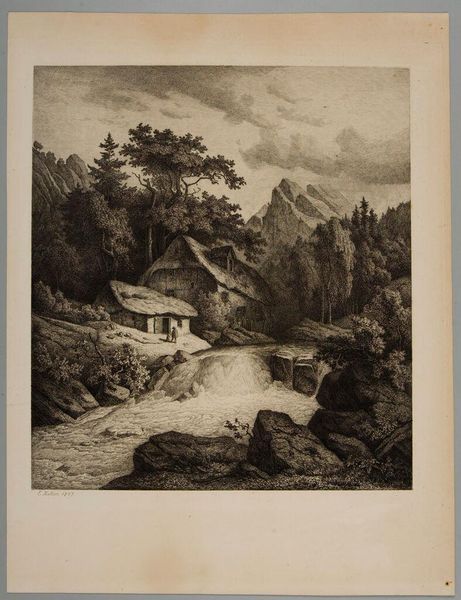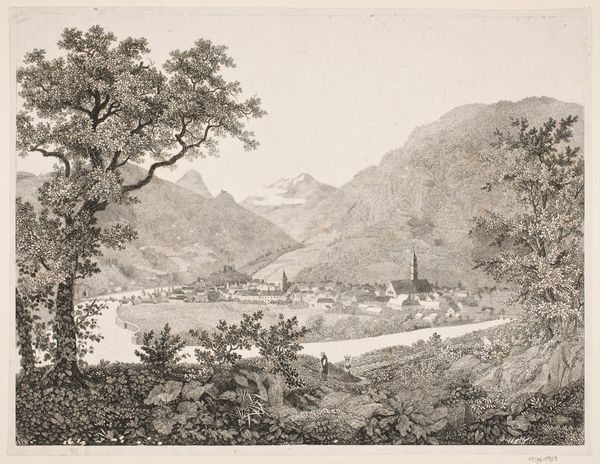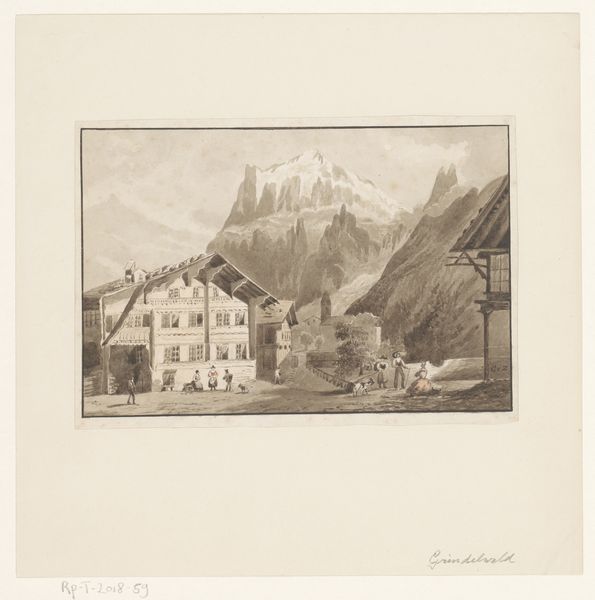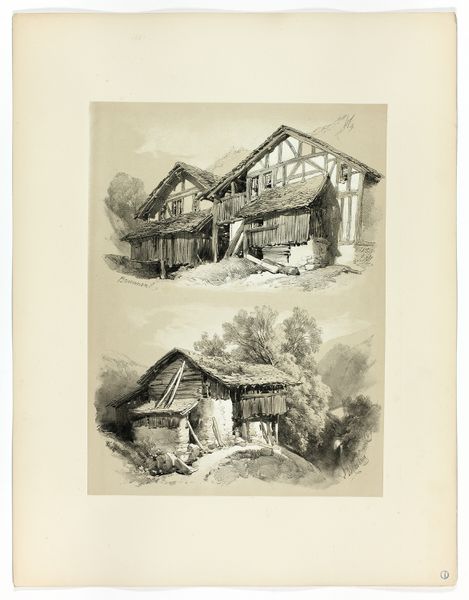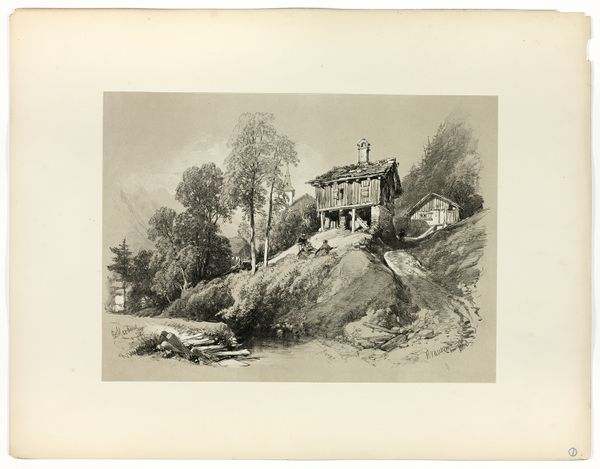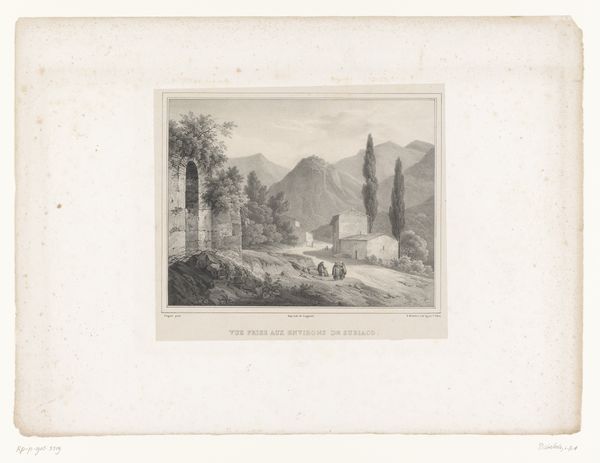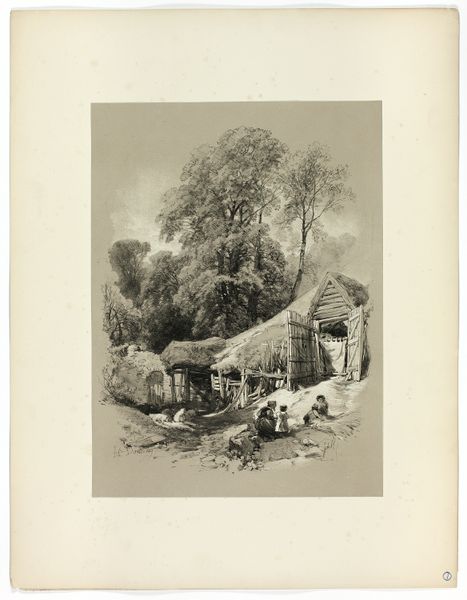
drawing, lithograph, print, paper
#
drawing
#
lithograph
# print
#
landscape
#
paper
#
realism
Dimensions: 283 × 395 mm (image, primary support); 430 × 560 mm (secondary support)
Copyright: Public Domain
Curator: My first impression? Serenity. I feel as though I've stumbled upon a hidden alpine village lost in time. It's like a half-remembered dream of a perfect vacation. Editor: You’re responding to its inherent picturesqueness. The work we’re observing, James Duffield Harding's 1859 lithograph "Brunnen, from Picturesque Selections," certainly evokes that feeling intentionally. It's a skillful composition printed on paper. Curator: Picturesqueness is precisely it! But it's not just the scenery, it's the subtle details – the worn boats, the quiet lake reflecting the formidable mountains...there is depth here, literal and emotional. Do you think that depth can come from lithography? Editor: Without a doubt. The velvety blacks and subtle tonal gradations possible with lithography allow Harding to articulate the spatial recession effectively. Observe how the foreground’s sharp detail softens into the hazy, almost dreamlike peaks. This use of atmospheric perspective invites you into the landscape, mimicking lived experience. Curator: The eye definitely travels! So the artist used lithography, not simply to document, but to shape a narrative, and invite an experience... Is there some manipulation in there? Is it truthful? Editor: The “truth” of landscape art, as with any genre, lies in its constructed nature. Harding’s Brunnen employs classic compositional strategies. The dark foreground, leading lines of the shoreline, the strategically placed buildings create a balanced yet dynamic composition, pushing back the edges of any kind of absolute real. These aren't accidental snapshots of reality. Curator: True. Even if they might give the impression of that! Maybe the artistry lies in creating that deception, inviting the viewer to get lost in a moment. The rough textures are captivating as well: it seems that with that manipulation he offers another image-truth that comes from imperfection, maybe? Editor: Exactly. This manipulation guides our perception, shaping how we see and understand the world he's presenting. Harding mastered not merely recording a view, but interpreting one—offering an invitation to contemplate our relationship with nature. Curator: So, more than a simple picturesque scene. Now I look one more time, I almost believe I can feel the fresh, damp air. A great piece of manipulation! Editor: Yes, isn't it? Each viewing unveils deeper appreciation for its calculated harmony, demonstrating the captivating strength within the formal components of the picture itself.
Comments
No comments
Be the first to comment and join the conversation on the ultimate creative platform.


